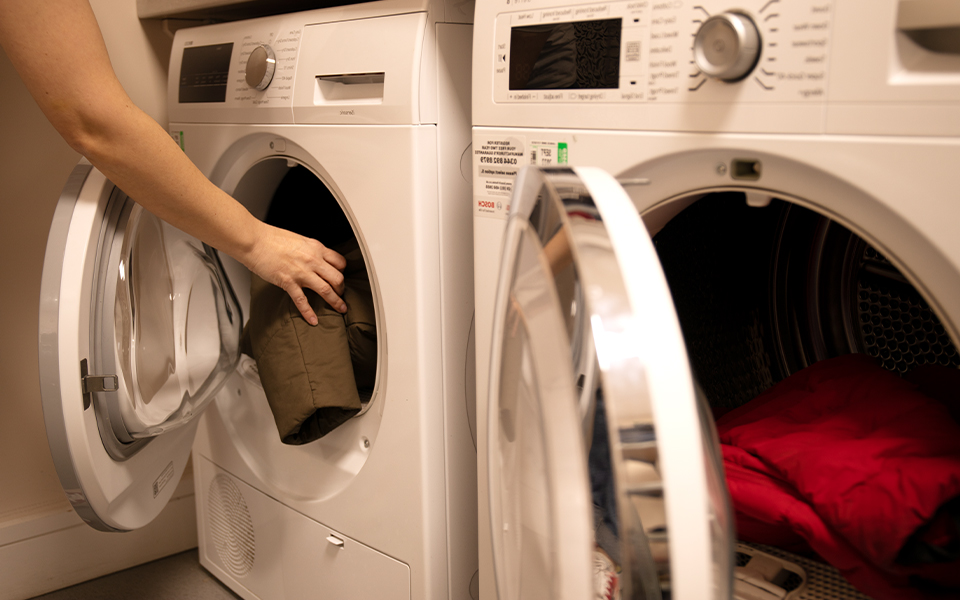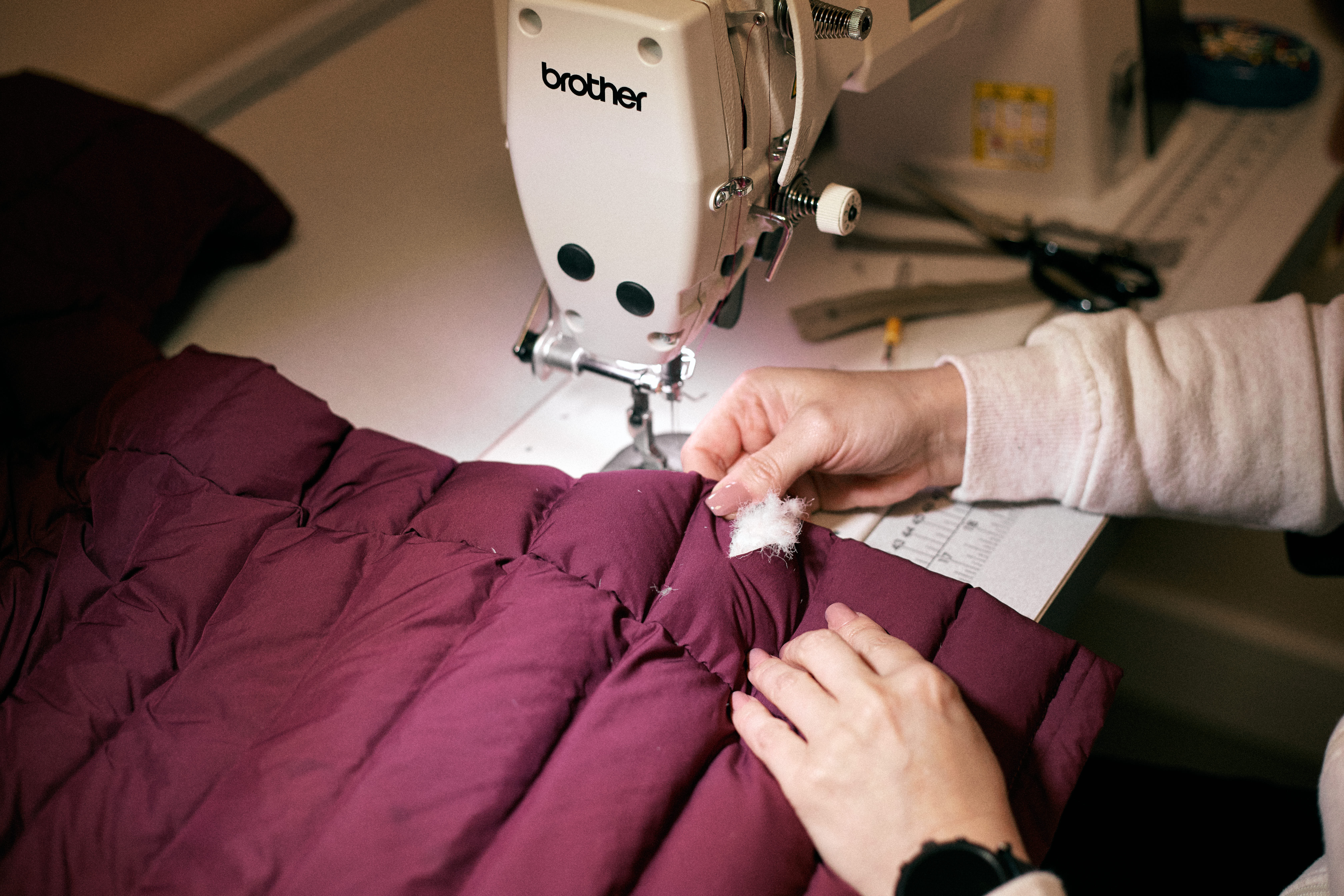12th Feb 2024
The Rohan Outdoor Clothing Care Guide
How to extend the life of your much-loved gear and keep exploring for longer.
12th Feb 2024
How to extend the life of your much-loved gear and keep exploring for longer.
Why is it important to make outdoor clothing last as long as possible?
Buying high quality technical gear is an investment towards your future adventures. So it makes sense to protect that investment by taking steps to make sure your clothing lasts as long as possible.
Durability and sustainability are really important to consider when choosing your outdoor clothing. But just because your gear is designed to last a long time, it doesn’t always guarantee that it will. To really get the most out of your gear, you need to understand how to properly take care of it.
Maintaining and caring for your outdoor clothing will save you money, extend the life of your much-loved gear, and help the environment by keeping perfectly useable clothing out of landfills. Most people expect their outdoor gear to last around three years, but did you know that by just wearing something for an extra nine months you could reduce its carbon, water, and waste footprints by up to 30%?
In today’s world of unsustainable fast fashion, it’s important to prioritise the health of the environment and take care of the gear that takes care of us, for a lifetime of journeys.


Washing
How do you keep your clothing clean?
The fabrics and finishes used in outdoor clothing tend to require a bit more care than your everyday clothes. If your clothing is designed to be water repellent, windproof, or insulating, then it will need some extra attention when washing.
Make sure that you carefully read any care labels on your clothing to ensure that you don’t accidentally damage the fabric and close all zips and hook and loop fasteners before washing. This helps to prevent snags and can stop your clothing from losing its shape in the wash.
Avoid using standard home washing detergents. While normal detergents will work perfectly fine for your everyday clothing, the added perfumes and fabric softeners will actually impair the performance of your technical clothing. Using a technical detergent to clean your gear will help to ensure that your clothes continue to perform for as long as you need them to.

If you want to learn how to wash a waterproof garment, check out our Waterproof Care Guide.
If your hiking boots or shoes need a bit of care and attention, have a look at our Footwear Care Guide.

How do you wash an insulated jacket?
Cleaning and maintaining a down or synthetic insulated jacket can seem like a daunting task, but it doesn’t need to be! Over time dirt, grime, and moisture can get into the insulation which hinders its ability to create loft and keep you warm. So it’s a good idea to periodically give your insulated clothing a bit of care and attention. Remember, as with all technical clothing, you shouldn’t use biological detergents and fabric softeners.
Synthetic Care
For synthetic insulation we’d recommend a cool and gentle wash cycle – check the care label on your garment for exact temperature and spin cycle information. It’s a good idea to use a specific technical detergent, and if you’re also looking to reproof the DWR finish on your jacket you can use a 2 in 1 wash and reproof treatment like Grangers Wash + Repel (Link). After washing you should gently tumble dry your synthetic jacket on a low heat setting to restore its loft.
Down Care
When washing down insulation we’d always recommend using a specialist down treatment like Grangers Down Care Kit (Link). For the best results, give your detergent drawer a clean and consider running a rinse cycle to clear out any lingering chemicals. Down jackets should be washed on their own and always wash and dry in accordance with the specific instructions on the care label.
After a wash, your jacket might look a bit flat and deflated. Don’t panic! This happens because the down inside is still wet. To help re-fluff your jacket, place a couple of dryer balls or clean tennis balls inside the dryer during the tumble-drying process. This works to agitate and evenly distribute the insulation, helping to restore your jacket’s loft and preventing the dreaded down clumps that can ruin a good jacket.
Down jackets shouldn’t be left to air dry. Not only does it take too long, but it also requires near constant attention to avoid the down feathers clumping. The best way to dry a down jacket is inside a tumble dryer on the lowest heat setting. Don’t be tempted to try and rush the process by turning up the heat as this could potentially melt the seams and damage the down and the outer fabric.
The drying process can take anywhere from 2-5 hours depending on the weight of your jacket. Even if your jacket feels dry on the outside, it’s possible that the down inside might still be damp, so don’t take it out too soon! During this process you should take the jacket out every 30 minutes or so to break up any clumps, and gently shake it out to help redistribute the down.
How do you wash Merino Wool clothing?
To clean garments featuring a Merino fabric blend, you should always use non-biological detergent and choose a cool and gentle cycle at 30 degrees. Once clean, always dry your Merino clothing flat instead of tumble drying. This will help to protect the garment from stretching and becoming misshaped.
Storage
How to store outdoor clothing after use?
When you get back from your adventures, it can be tempting to put your outdoor clothes straight back into the wardrobe. But this could actually be doing your clothing harm, and over time will reduce the lifespan of your kit.
If your gear is wet or dirty, storing it straight away can lead to the growth of mildew and bacteria which will reduce the performance of your clothes, and make them rather unpleasant to wear! Always take the time to give your gear a bit of a clean and dry if necessary, you’ll be grateful you did when you go to head out on your next adventure.
How do you store outdoor gear after washing?
Whether you’re re-proofing waterproof trousers, or cleaning a down jacket, it’s important to correctly store your kit after washing to optimise its future performance.
After a wash, your clothing should be stored in a well-ventilated, cool, and dry area. If the air in your storage area is too humid this can cause moisture to build up in the garments, which if left unchecked can lead to mould and mildew. If humidity is an issue in your home, then it might be worth using a de-humidifier to help stabilise your storage environment.
If you’re storing waterproof or insulated clothing, then it’s important to make sure that they are kept uncompressed and loose rather than folded away.
Insulated jackets rely on their ability to loft or puff up to keep you warm. Keeping them compressed for long periods of time can damage the insulation and change the shape of the jacket. This is especially important in items with down insulation.
Waterproofs tend to have a water repellent finish on the outer material, if the garment is folded or compressed then the abrasion from this can wear away the finish and reduce the performance of the membrane where it has been folded.
Inspection and repair
How do you deal with tears and rips?
Accidentally snagged your jacket on a tree branch, or brushed up against a rather abrasive rock while scrambling? It’s normal to experience some accidental rips and tears to your gear while you’re out adventuring, but when you get back home it’s important to take the time to fully assess your clothing for any damage.
A small tear can quickly become a large problem if left untreated, especially in items like down jackets where the insulation could potentially escape. So make sure you address any rips or tears as soon as you possibly can. Duct tape can work well as a temporary fix, but it’s always best to get your gear professionally repaired to ensure its longevity.
What to do if a zipper or stitching malfunctions?
It can be frustrating when a zip or a seam suddenly stops working or comes apart. It might feel like this is the end of road for that piece of clothing, but it absolutely doesn’t have to be.
Simple repairs can easily be done at home but if you’d rather leave your clothes in professional hands, then you can take advantage of our in-house repair service.

Top tip
For extended trips, it’s a good idea to carry a basic repair kit so that you can keep your gear functioning until you can properly repair it. We’d recommend: a needle and thread, some sort of seam sealer, and duct tape or adhesive patches.